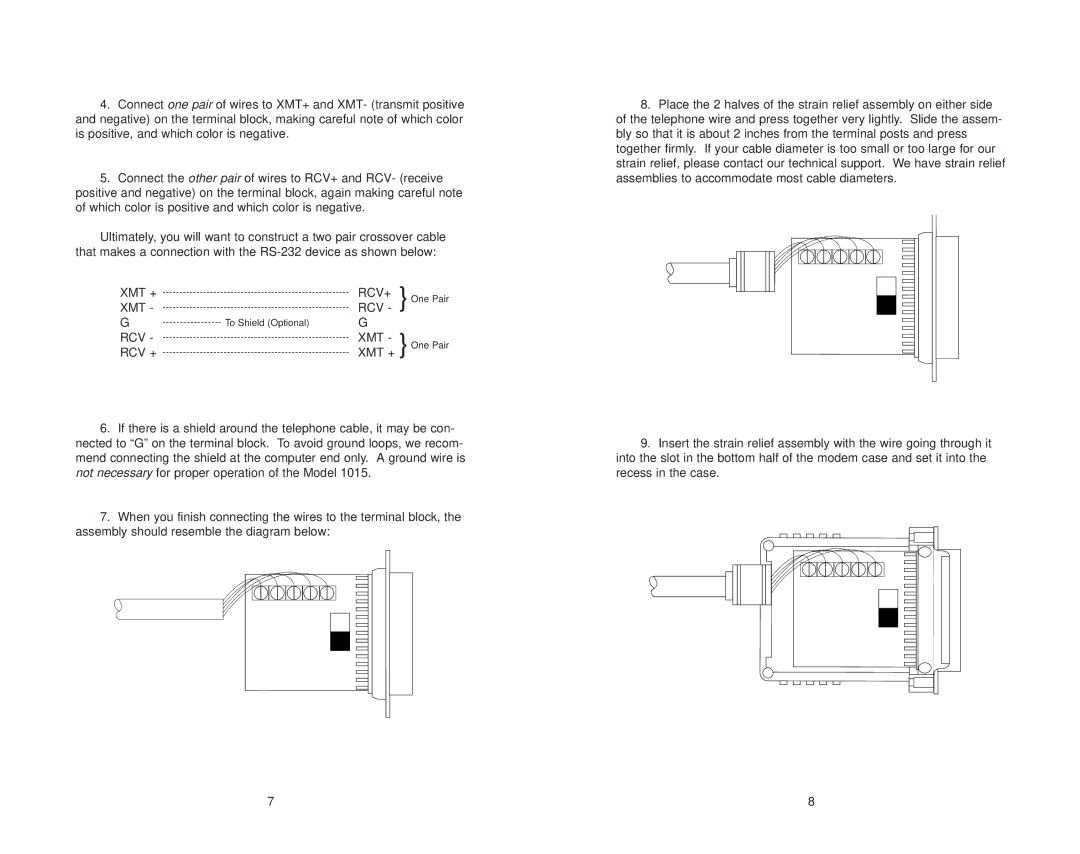1015S, 1015 specifications
The Patton Electronics 1015 and 1015S are compact, high-performance serial to Ethernet converters that play a critical role in connecting legacy serial devices to modern IP networks. These devices are particularly valuable in applications where integrating older technology with contemporary systems is necessary, such as in industrial automation, telecommunications, and remote monitoring.One of the main features of the Patton 1015 and 1015S is their ability to support both standard and extended temperatures, making them suitable for deployment in a variety of harsh environments. The devices are designed to work seamlessly with typical serial connections, including RS-232, RS-422, and RS-485 interfaces, ensuring versatile connectivity options for a wide range of serial devices.
The 1015 and 1015S utilize a robust protocol handling capability, enabling them to convert and transmit data without dropping packets. This reliability is essential for critical applications that require consistent data flow. The devices support both TCP and UDP communications, providing flexibility to users depending on their specific network architecture and protocol requirements.
Another notable characteristic of the Patton 1015 series is its user-friendly web-based management interface, which simplifies configuration and monitoring. This intuitive setup allows users to adjust port settings, monitor connections, and troubleshoot issues remotely, thus enhancing overall operational efficiency.
Moreover, the 1015S model includes support for Secure Sockets Layer (SSL) encryption, which ensures data integrity and confidentiality during transmission over potentially insecure networks. This added layer of security is increasingly important in today’s data-driven environments, where cyber threats are prevalent.
The compact design of the Patton 1015 and 1015S ensures easy integration into existing setups without requiring extensive changes to infrastructure. With their simple installation process and minimal power consumption, they represent an efficient solution for organizations seeking to modernize their connectivity while preserving investment in legacy systems.
In summary, the Patton Electronics 1015 and 1015S are powerful tools for bridging the gap between serial devices and IP networks. With their robust feature set, including multi-protocol support, temperature resilience, and secure communications options, they stand out as reliable solutions in an ever-evolving technological landscape.

